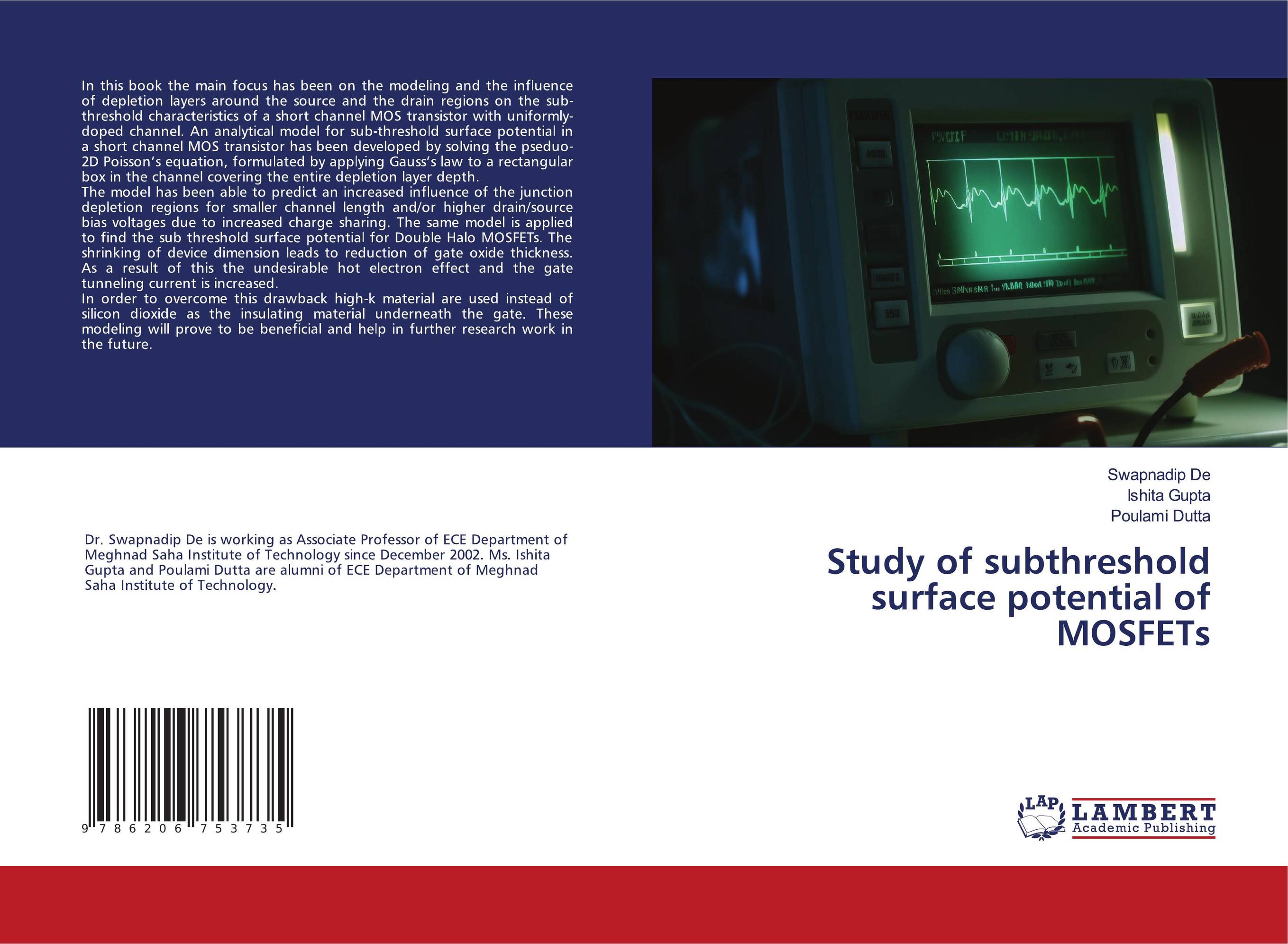| Поиск по каталогу |
|
(строгое соответствие)
|
- Профессиональная
- Научно-популярная
- Художественная
- Публицистика
- Детская
- Искусство
- Хобби, семья, дом
- Спорт
- Путеводители
- Блокноты, тетради, открытки
Study of subthreshold surface potential of MOSFETs.

В наличии
| Местонахождение: Алматы | Состояние экземпляра: новый |

Бумажная
версия
версия
Автор: Swapnadip De,Ishita Gupta and Poulami Dutta
ISBN: 9786206753735
Год издания: 1905
Формат книги: 60×90/16 (145×215 мм)
Количество страниц: 64
Издательство: LAP LAMBERT Academic Publishing
Цена: 27237 тг
Положить в корзину
Позиции в рубрикаторе
Отрасли экономики:Код товара: 761174
| Способы доставки в город Алматы * комплектация (срок до отгрузки) не более 2 рабочих дней |
| Самовывоз из города Алматы (пункты самовывоза партнёра CDEK) |
| Курьерская доставка CDEK из города Москва |
| Доставка Почтой России из города Москва |
Аннотация: In this book the main focus has been on the modeling and the influence of depletion layers around the source and the drain regions on the sub-threshold characteristics of a short channel MOS transistor with uniformly-doped channel. An analytical model for sub-threshold surface potential in a short channel MOS transistor has been developed by solving the pseduo-2D Poisson’s equation, formulated by applying Gauss’s law to a rectangular box in the channel covering the entire depletion layer depth. The model has been able to predict an increased influence of the junction depletion regions for smaller channel length and/or higher drain/source bias voltages due to increased charge sharing. The same model is applied to find the sub threshold surface potential for Double Halo MOSFETs. The shrinking of device dimension leads to reduction of gate oxide thickness. As a result of this the undesirable hot electron effect and the gate tunneling current is increased. In order to overcome this drawback high-k material are used instead of silicon dioxide as the insulating material underneath the gate. These modeling will prove to be beneficial and help in further research work in the future.
Ключевые слова: VLSI, Device, semiconductor



